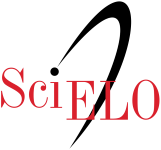Artefatos biológicos artificiais: do modelo imitativo de inteligência artificial ao advento de organismos vivos programados
DOI:
https://doi.org/10.7213/1980-5934.32.055.DS06Palabras clave:
Inteligência Artificial. Modelo Imitativo. Abordagem InteracionistaResumen
O programa de pesquisa em Inteligência Artificial, desde sua origem, tem a inteligência humana como modelo, e sua reprodução (ou superação) como escopo. Com o objetivo de sustentar a necessidade de um novo modelo de investigação sobre inteligência, a presente pesquisa destaca inicialmente o caráter imitativo da IA clássica mediante as críticas de Searle e Dreyfus ao projeto da IA. Procuramos sustentar que uma abordagem mais ampla de inteligência, como a sugerida por Bickhard, que tem comoreferência os sistemas físicos autossustentáveis recursivamente, partindo da investigação do funcionamento de inteligências primitivas, é a perspectiva mais produtiva para a IA. Para isso, apresentamos o advento dos “xenobots”, os organismos vivos programados, como um marco nesta perspectiva de pesquisa em IA que se desprende do modelo imitativo de inteligência, sem desconsiderar a dimensão interacionista dos organismos vivos, para promover uma “inteligência biológica artificializada”.
Descargas
Citas
BICKHARD, M. H. Interactivism. In J. Symons, P. Calvo (Eds.) The Routledge Companion to Philosophy of Psychology. p.346-359. London: Routledg, 2009a.
BICKHARD, M. H. The interactivist model. Synthese, 166(3), p. 547-591, 2009b.
BICKHARD, M.: Part II: Applications of Process-Based Theories: Process and Emergence: Normative Function and Representation. Axiomathes 14(1), p. 121–155, 2004.
BOSTROM, N. Superintelligence: paths, dangers, strategies. New York: Oxford University Press, 2014.
DREYFUS, H. What computers can’t do: a critique of artificial reason. New York: Harper & Row, 1972.
DREYFUS, H. What Computers Still Can`t Do: a critique of artificial reason. Cambridge: MIT Press, 199.
DREYFUS, H. L. Why Heideggerian AI failed and how fixing it would require making it more Heideggerian. In: Artificial Intelligence. [s.l.] Elsevier, 2007. v. 171p. 1137– 1160.
DREYFUS, H. Skillful Coping: Essays on the Phenomenology of Everyday Perception and Action. Oxford University Press, 2014.
FEARN, Nicholas. The latest answers to the oldest questions: a philosophical adventure with the world's greatest thinkers, Grove Press, 2005.
FODOR, J., You Can Fool Some of the People All of the Time, Everything Else Being Equal. "Hedged Laws and Psychological Explanations", Mind, 100, 397, pp. 19-34, 1991.
GARDNER, H. A nova ciência da mente. 3. ed. São Paulo: EDUSP, 2003.
HANDERSON, H. Artificial Intelligence: mirrors for the mind. New York: Chelsea House Publishers, 2007.
KRIEGMAN, S., BLACKISTON, D., LEVIN, M., E BONGARD, J. A scalable pipeline for designing reconfigurable organisms. Proceedings of the National Academy of Sciences (PNAS). 117 (4) 1853-1859. https://doi.org/10.1073/pnas.1910837117. Janeiro de 2020.
PARK, S. J. et al. Phototactic guidance of a tissue-engineered soft-robotic ray. Science 353, p.158–162, 2016.
SEARLE, J. A redescoberta da mente. São Paulo: Martins Fontes, 1997.
SEARLE, J. Intencionalidade. São Paulo: Martins Fontes, 1995.
SEARLE, J. R. Minds, brains, and programs. Behavioral and Brain Sciences, Cambridge, v. n. 3, p. 417-457, 1980.
SEARLE, J. The Chinese Room. The MIT Encyclopedia of the Cognitive Sciences, p. 115-116. Cambridge: MIT Press, 1999.
SHANAHAN, M. The Frame Problem. In: ZALTA, Edward N. (Ed.). The Stanford Ency- clopedia of Philosophy. Spring 2016 ed. [s.l.] https://plato.stanford.edu/archives/spr2016/entries/frame-problem/; Metaphysics Research Lab, Stanford University, 2016.
SILVER, N. The Signal and the Noise: Why Most Predictions Fail – but Some Don't. New York : The Penguin Press, 2012.
SUSSER, Daniel. Artificial Intelligence and the Body: Dreyfus, Bickhard, and the Future of AI. In: MULLER, Vicent. Philosophy and Theory of Artificial Intelligence. Springer, 2013.
TURING, A. M. Computing machinery and intelligence. Mind, Oxford, n. 59, p.433-460, 1950.
Descargas
Publicado
Cómo citar
Número
Sección
Licencia
El autor transfiere, por medio de cesión, a la EDITORA UNIVERSITARIA CHAMPAGNAT, persona jurídica de derecho privado, inscrita en el CNPJ/MF bajo el n.º 76.659.820/0009-09, establecida en la (calle) Rua Imaculada Conceição, n.º 1155, Prado Velho, CEP 80.215-901, en la ciudad de Curitiba/PR, los derechos abajo especificados y se compromete a cumplir lo que sigue:
Los autores afirman que la obra/material es de su autoría y asumen integral responsabilidad frente a terceros, ya sea de naturaleza moral o patrimonial, en razón de su contenido, declarando, desde ya, que la obra/material a ser entregada es original y no infringe derechos de propiedad intelectual de terceros.
- Los autores concuerdan en ceder de forma plena, total y definitiva los derechos patrimoniales de la obra/material a la EDITORA UNIVERSITARIA CHAMPAGNAT, a título gratuito y en carácter de exclusividad.
- LA CESIONARIA empleará la obra/material de la forma como mejor le convenga, de forma impresa y/u on line, incluso en el sitio del periódico de la EDITORA UNIVERSITARIA CHAMPAGNAT, pudiendo utilizar, disfrutar y disponer del mismo, en todo o en parte, para:
- Autorizar su utilización por terceros, como parte integrante de otras obras.
- Editar, grabar e imprimir, cuantas veces sean necesarias.
- Reproducir en cantidades que juzgue necesarias, de forma tangible e intangible.
- Adaptar, modificar, condensar, resumir, reducir, compilar, ampliar, alterar, mezclar con otros contenidos, incluir imágenes, gráficos, objetos digitales, infográficos e hyperlinks, ilustrar, diagramar, fraccionar, actualizar y realizar otras transformaciones, siendo necesaria la participación o autorización expresa de los autores.
- Traducir para cualquier idioma.
- Incluir en fonograma o producción audiovisual.
- Distribuir.
- Distribuir mediante cable, fibra óptica, satélite, ondas o cualquier otro sistema que permite al usuario realizar la selección de la obra o producción para recibirla en tiempo y lugar previamente determinados por quien formula la demanda y en los casos en que el acceso a las obras o producciones se haga por cualquier sistema que importe en pago por el usuario.
- Incluir y almacenar en banco de datos, físico, digital o virtual, incluso nube.
- Comunicar directa y/o indirectamente al público.
- Incluir en base de datos, archivar en formato impreso, almacenar en computador, incluso en sistema de nube, microfilmar y las demás formas de archivo del género;
- Comercializar, divulgar, vehicular, publicar etc.
- Otro tipo de modalidades de utilización existentes o que vengan a ser inventadas.
- Los autores concuerdan en conceder la cesión de los derechos de la primera publicación (carácter inédito) a la revista, licenciada bajo la CREATIVE COMMONS ATTRIBUTION LICENSE, que permite compartir el trabajo con reconocimiento de la autoría.
- Los autores autorizan la reproducción y la citación de su trabajo en repositorios institucionales, página personal, trabajos científicos, entre otros, desde que la fuente sea citada.
- La presente cesión es válida para todo el territorio nacional y para el exterior.
- Este término entra en vigor en la fecha de su firma y es firmado por las partes en carácter irrevocable e irretractable, obligando definitivamente las partes y sus sucesores a cualquier título.
- La no aceptación del artículo, por la EDITORA UNIVERSITARIA CHAMPAGNAT, hará que la presente declaración sea automáticamente nula y sin efecto.












